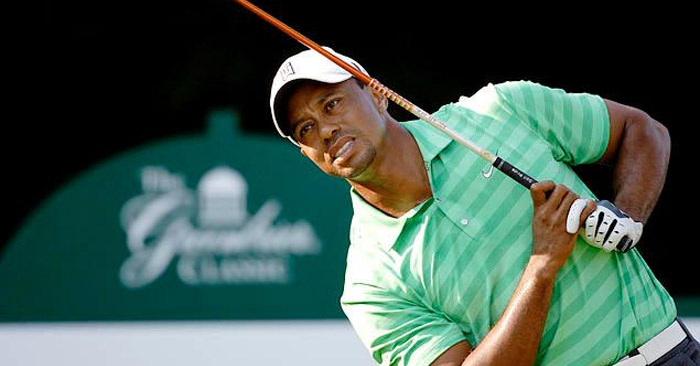What's discernible to the naked eye? That's now the question rules officials will have to judge thanks to a new rules decision jointly announced by the USGA and R&A on Tuesday.
As part of their biennial update to the "Decisions on the Rules of Golf", the governing bodies announced an update to Rule 18, which covers when a ball moves without being struck by a shot.
The change would have likely absolved Tiger Woods of a 2-stroke penalty he incurred in September at the BMW Championship when his ball moved while Woods was clearing brush around it following an errant shot. Video footage presented to PGA Tour rules officials showed Woods' ball clearly moving, not returning to its original position. After a review with Woods, officials decided he must incur a 2-stroke penalty despite Woods' protestations that the ball oscillated before returning to its original position.
Here's the full wording of the decision that takes effect Jan. 1, 2014:
Decision 18/4 provides that, where enhanced technological evidence (e.g. HDTV, digital recording or online visual media, etc.) shows that a ball has left its position and come to rest in another location, the ball will not be deemed to have moved if that movement was not reasonably discernible to the naked eye at the time. The R&A and the USGA have issued a Joint Statement on the Use of Video and other Visual Evidence to further explain the governing bodies’ position on the use of this technology.
The intent is pure, and it's a decision that is supported by recent precedent to absolve players of penalties from rules violations they could not perceptibly either see or cause. Nevertheless, it creates a slippery slope of interpretation and, potentially, a player's integrity.
Let's return to the Woods situation at Conway Farms. The video footage showed the ball clearly moved, but what we consumed was with the benefit of zoom and HD technology. Given that evidence, Woods is guilty. But using this new decision, officials would ask Woods simply if he believed his ball moved. Woods would have said no, case closed.
Don't pee on my shoe and tell me it's raining, says Judge Judy.
Obviously rules officials have to trust Woods, or any player, in this situation using the new decision. But is that fully warranted?
Tiger Woods has had Lasik surgery twice to correct his vision. It's reasonable to assume he doesn't have vision like a hawk. It's genetics. That fact makes it a little easier to side with Woods' position that the ball did not move. How well can a guy with maybe 20/40 vision see a ball move a quarter to a half of a revolution?
I'll inject personal experience into the situation. In 2006, I first began to deal with a massive and scary eye infection. Millions of amoeba (those single-celled organisms from middle-school biology) were eating away at my eye. Eventually, the infection was treated, by my left eye is permanently sensitive to bright light, and I have to wear a hard contact lens so I can see reasonably well. But I don't trust my eyesight. And before the hard contact lens, I didn't see all that well out of it, either. It was for depth perception, and that's all. Would you take my word that a ball moved or didn't?
We also have to factor in a player's point of view when the ball moves. Are they over top of it? Are they behind it? To what kind of angle? Again, depending on where Woods was, he very well could have missed the ball moving. If Woods turned his back for a second to make sure he doesn't walk into a sticker bush and the balls moved then, Woods didn't see it either. Using this new decision, we're to trust Woods' angle in addition to his eyesight.
So let's say this all plays out precisely the same way for Woods or another player at a tournament in 2014. The ball moves, cameras catch it and officials are made aware of it. They talk to the player. The player says they didn't see it move. Can the rules official overrule a player?
We're not talking about cases in which the ball moves a full revolution or more; even Mr. Magoo should be able to see that from most any angle. We're talking about that quarter-to-half revolution, which most players can probably see up close if they're paying attention. Obviously, there won't be an eye exam administered at each tournament, so the benefit of the doubt goes to the player.
But survey golfers -- especially those at the highest level -- and I imagine most would say they want to be held to a rules violation, even if it's one they didn't realize happened. Would a player, confronted with video evidence that their recollection was wrong, penalize themselves even if they don't have to?
That would be the ultimate test of integrity.
ASIDE: The ruling bodies got it right on allowing a player to get approximately 50 yards from the teeing ground to decide whether or not to hit a provisional. It's better to make that decision a flip wedge away than a full driver, both for the player and pace of play. But why not do away with out of bounds altogether? It slows down the game and frustrates players. Instead, treat out of bounds (and internal out of bounds should be abolished entirely) like a lateral hazard, but the ball is dropped after a 2-stroke penalty. It's more penal, but speeds up play.




Add Comment